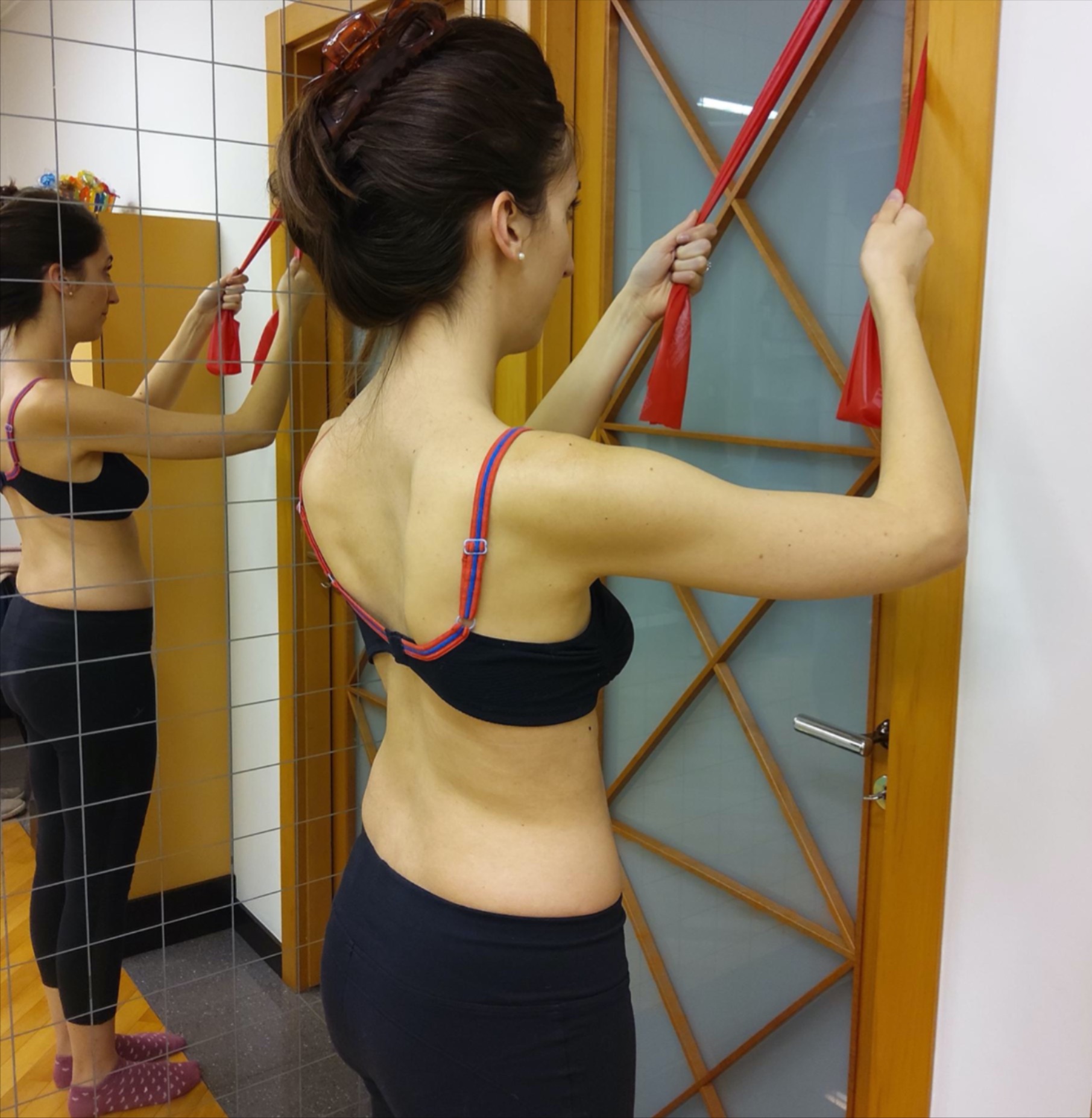If this message does not display correctly, click here
.jpg)
.png)
Living "In self-correction": is it possible?

First of all, what is self-correction?
Kids who have scoliosis and perform SEAS exercises regularly know well what it is.
Scoliosis modifies the physiological position of the column and causes a deformity in the three planes of space.
Self-correction is a correction of all these anomalies.
Self-correction allows the patient to achieve greater symmetry and a more well-balanced back in the sagittal plane.
Acquiring the technique from the outset and applying it as often as possible in daily life should be the goal.



Dr Donzelli at Oxford University
Isis Navarro at Isico headquarter
Dr Sabrina Donzelli, an Isico physician, participated some weeks ago in a joint programme in collaboration with the renowned Centre for Evidence-Based Medicine in Oxford, together with other 15 students coming from Egypt, Brasil, Ireland, UK, USA, Ghana, Canada, Hong Kong, Malaysia, Lebano and Italia.
Isis Navarro, a Brazilian physiotherapist, attended in the past a SEAS Course in Rio de Janeiro.
Some weeks ago, she decided to take advantage of the opportunity to follow the practical application of the SEAS approach at our Milan headquarter. While she was here, we asked about her experience...


In 2020 the Master has doubled.

With these words on January 23, the first Chinese edition officially started for about twenty participants, organised in collaboration with the Hong Kong Foundation HKCCF.

Michele Romano, professor for a day at the University of Québec
A few weeks ago, Michele Romano, Director of physical therapy at Isico, gave a workshop at the prestigious University of Quebec in Trois-Rivières, Canada.
The lesson was devoted to SEAS (the Scientific Exercises-based Approach to Scoliosis) and took place during a conference organised by the University as part of its annual scoliosis month (this year being held for the ninth time) ...
.png)
SOSORT 2020: all Isico abstracts submitted
"passed the test"
Isico will once again be in the front line at the International SOSORT meeting, this year being held from 27th to 29th April in Melbourne, Australia, during Spine Week (April 27th to May 1st, 2020).
"All the abstracts we presented have been accepted" reports Dr Sabrina Donzelli, Isico physiatrist and author of the research paper that is in the running for the SOSORT Award...

Can wearing a brace be a problem for teenagers?
Isico uses corrective underarm and lombar braces that are easily hidden under t-shirts (providing these are a slightly loose fitting), and they are very well tolerated and unobtrusive. They can be worn for sport and for physical exercise at school, and indeed allow the wearer to lead a perfectly normal life.


Sweet dreams... even if braced
Maintaining a normal sleep-wake rhythm is an important factor when facing brace-therapy because it can affect the treatment itself and improve it. A factor on which investigated the study of Isico "Actigraphy-based Sleep Parameters and Rest-activity Circadian Rhythm in a Young Scoliotic Patient Treated with Rigid Bracing: A Case Study", recently published by Yale J Biol Med.

Every year, the Italian Scoliosis Study Group selects the best published papers on conservative spine treatment from the global scientific literature. Here is the abstract from one of these papers.
Risk of revision surgery for adult idiopathic scoliosis: a survival analysis of 517 cases over 25 years.
Riouallon G, Bouyer B, Wolff S
Eur Spine J. 2016 Aug;25(8):2527-34. doi: 10.1007/s00586-016-4505-5. Epub 2016 Mar 10.

Over the past 15 years, we have published dozens of posts and received thousands of comments on our blog dedicated to scoliosis that gives our patients a voice.
The Isico blog www.scoliosi.org is a dedicated space where patients can ask questions and swap experiences, but it is also a place where those involved in treating scoliosis can take a more in-depth look at a series of topics and also engage with patients.
Here is one of our published posts.
Friends and bracing
Adolescence and bracing are two challenges that can be difficult to face simultaneously. And, in our view, this is perfectly natural and understandable.
Adolescence is usually perceived as a difficult phase during which young people are still immature, tend to be irrational, and struggle to control their emotions...


Coming up
5-8 March - AANS/CNS Spine Summit 2020 - Las Vegas, USA
13-14 March - Current Concepts in Spine Deformity, Florianópolis, Brazil
19-21 March - CSRS Asia Pacific Section: 11th Annual Meeting - Seoul, Korea
24-28 March - AAOS Annual Meeting| Orlando - FL, USA
28 March - Federation of Spine Associations Specialty Day - Orlando, USA
1-4 April - EPOS Annual Meeting - Porto, Portugal
If you don't want to receive messages from Isico anymore, click here:
UNSUBSCRIBE